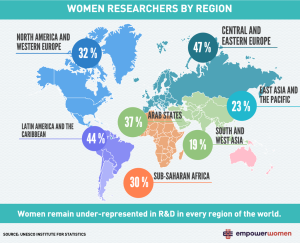
Science & Tech
Greenbug Energy: Creating renewable energy from old technology
GreenBug Energy wins 2015 3M Environmental Innovation Award for micro-hydro turbines
- 1659 words
- 7 minutes
This article is over 5 years old and may contain outdated information.
Science & Tech

| TRIED | TESTED | TRUE |
|
Lighting with lightning |
Excreting energy Instead of conjuring memories of a bad case of food poisoning, E. coli may one day become synonymous with biofuel if San Francisco start-up LS 9 has its way. In 2010, in partnership with the U.S. Department of Energy’s Joint BioEnergy Institute and the University of California, Berkeley, LS 9 published research about genetically modifying a strain of E. coli to convert glucose into biodiesel. After a 1,900-litre pilot program proved successful, the company bought a plant in Florida, where a 132,000-litre fermenter is scheduled to be up and running this year. A similar technology using algae has been studied, but LS 9 spokesman Dale Young highlights one significant difference: “In a lot of algae technology, the product is not excreted … basically, you have to squish the algae to get the product out.” But E. coli ingests sugar and excretes biodiesel — the fuel floats to the top of the fermenter and can be skimmed off. |
Fecal matters The concept of using human waste as a fuel source no longer involves a composting toilet that requires wood chips and a weekly stir. In Vancouver, when environmental groups launched a 2007 lawsuit against the city’s treatment facilities for violating federal pollution laws, a new liquid- waste management plan evolved. As part of a $1.1 million upgrade, a system was installed to collect the methane produced from processing sewage. The gas powers the facility and is fed into the city’s natural-gas distribution system. The project is expected to reduce greenhouse-gas emissions by 500 tonnes a year and to produce enough energy to power 100 homes. Vancouver’s Dynamotive Energy Systems has gone further, using human sewage and wood chips to create BioOil, a substitute for fossil fuels in diesel engines and boilers. The company’s plant in Guelph, Ont., produces 22,000 tonnes of BioOil a year. |
|
Taming tornadoes |
Backyard power plant Solar panels may be environmentally friendly, but they aren’t always easy on the eye. Solar Botanic of London, England, may have come up with a solution for homeowners who are a little more preoccupied with aesthetics, creating a combined solar- and wind-energy collecting system that emulates the maple tree growing in your backyard. Artificial “Nanoleaves” harvest wind energy as they flutter, while their green surface area collects energy from both direct sunlight and heat, capturing piezovoltaic, photovoltaic and thermovoltaic energy, respectively. An artificial broad-leaf tree such as a maple or an oak would generate up to 25.2 gigajoules a year, roughly one-quarter of the average Canadian household consumption. |
Fuelling up on coffee grounds Harnessing the energy from a cup of coffee is more than an expression at Energy Innovation Corp. in Oakville, Ont. In June 2010, the company opened the world’s first plant that produces biodiesel from used coffee grounds. Generally made from vegetable oils or animal fats, biodiesel is a renewable fuel that’s often used in cars, trains and buses. While it’s not a new product, demand is on the rise due to new government regulations requiring that diesel fuel sold domestically contain at least two percent biodiesel. As a result, Energy Innovation, which collects grounds from about 100 coffee shops, is now planning a major expansion. The company hopes to open up to eight more plants in Ontario over the next few years. |
Are you passionate about Canadian geography?
You can support Canadian Geographic in 3 ways:

Science & Tech
GreenBug Energy wins 2015 3M Environmental Innovation Award for micro-hydro turbines

Travel
Seeing iconic landscapes before they fade away may be accelerating their demise. Can we square the circle on making these trips sustainable?

Science & Tech
From Roberta Bondar to Harriet Brooks, Canada has more than its fair share of women scientists to be proud of. However women are still a minority in the STEM fields

Environment
Carbon capture is big business, but its challenges fly in the face of the need to lower emissions. Can we square the circle on this technological Wild West?